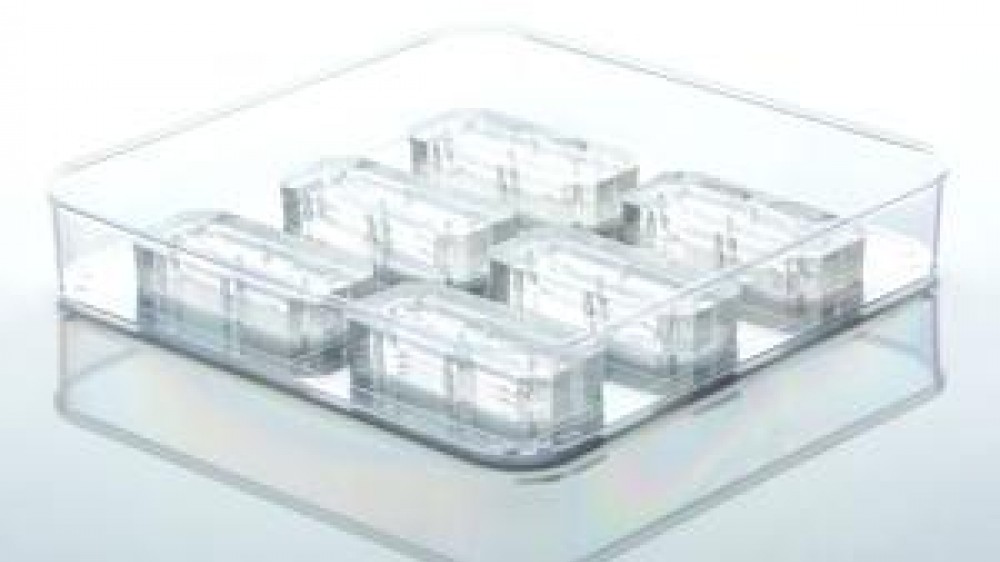Organs-on-Chips Technology: fostering scientific curiosity to accelerate drug discovery

Today, AstraZeneca has signed a strategic agreement with Emulate, a leading Organ-Chip company, to accelerate the application of these technologies in their drug discovery programmes.
Here, Dr Lorna Ewart, Head of the Microphysiological Systems Centre of Excellence at AstraZeneca, describes the background to this partnership and the pharmaceutical company’s shift on Organs-on-Chips technology from one of pure curiosity to application to improve their drug discovery and reduce their reliance on animal models.
As a scientist, I am driven by curiosity and a desire to bring innovative medicines to patients that improve their quality of life whilst tackling the underlying causes of disease. I am extremely privileged to lead a team within AstraZeneca’s Innovative Medicines and Early Development (IMED) Biotech Unit that works with micro-engineered systems known as Organs-on-Chips. By combining human biology, engineering and design, these systems more closely recreate the biological processes within human bodies, when compared to current animal models or less complex in vitro cell models; enabling scientists developing new medicines to better predict how they will behave in patients.
To build specific Organ-Chip models, functional (parenchymal) cells and their surrounding support cells are placed in the tiny channels of the Organ-Chip. Medicines can be added to the Organ-Chips by flowing them through the channels (just like the flow of blood in humans). The Chips provide the right cues for the cells to function as they do in the body. For example, we can apply mechanical forces to the Chips to emulate those found in the body, such as electrostimulation in the heart or stretch to recreate breathing motion in the lung. The design of the Organ-Chips allows us to create a home-away-from-home for the cells so they behave in an authentic manner. Scientists can observe and measure these behaviours in many exciting ways, affording the curious amongst us the opportunity to learn more about what drives human cellular biology and disease mechanisms. Such opportunities are not possible using traditional cell culture techniques or animal models. Although the Organ-Chip field is less than 10 years old, it is developing at a rapid pace.
For over 50 years, the 3Rs framework, which describes the replacement, reduction, and refinement of animals in scientific research, has been a guiding principle, and Organ-Chips hold the potential to have one of the biggest positive impacts on these principles yet. While these new tools promise more than new answers to existing questions, they also offer whole new routes to understanding health and disease. This could mean a reduction in the use of animals in the early stages of drug development, both through reduced reliance on animal models overall as drugs destined to fail in man are identified early, as well as a richer more contextualised understanding of data from continuing animal studies. Most tantalising of all is the prospect of genuine replacement in the cases where the systems have potential to replace entire classes of animal models. Every development and improvement gets us one step closer to this ultimate goal.
The Organ-Chips technology occupies a distinct space in the experimental continuum, sitting in between traditional in vitro cell culture and in vivo models. It takes specialised skills from a multidisciplinary team to develop these models. Over the last five years, AstraZeneca has built a close working relationship with Emulate, a leading Organ-Chip company based in Boston, USA. On the back of a successful beta testing program of Emulate’s Human Emulation System, a lab-ready platform that includes the Chips and instrumentation needed to maintain the Chips, scientists in my lab at AstraZeneca confirmed the system’s robustness and its suitability for application into the workflow of drug discovery projects. As a result, our two companies announced an agreement that will see AstraZeneca and Emulate scientists working side-by-side at our respective R&D facilities. By developing a community to share best practice and investing in a strong skill base, the adoption of this technology across drug safety, and ultimately therapeutic areas, will be accelerated, bringing opportunities for real impact in drug discovery and the 3Rs even closer.
This transformative technology has the potential to create a paradigm shift in today’s drug discovery process at discrete points. By creating disease-relevant models, the technology is poised to become the new engine of target validation by providing a rapid assessment of functional outcomes. Organ-Chip disease models can also contribute to drug repositioning, a practice that can fast-track existing candidate drugs into new disease indications. As shared by Emulate during the 2018 Society of Toxicology meeting in San Antonio, Texas, the creation of rat, dog and human Liver-Chips will enhance the confidence in human risk assessment by confirming or refuting the likelihood of a drug side effect in humans. Finally, because of the ability to link different Organ-Chips, there is also the potential to recreate the absorption, distribution, metabolism and excretion pathway for drug candidates. The ultimate vision is to combine assessment of efficacy and safety into one experiment to develop a quantitative assessment of the effectiveness of potential new medicines.
These are exciting times within drug discovery and the success of human-relevant model systems will be endorsed when new drugs are approved by regulatory agencies on the strength of data from these systems. Time then to look deeper into cellular response with these Organ-Chips and turn curiosity into the next generation of innovative medicines.
